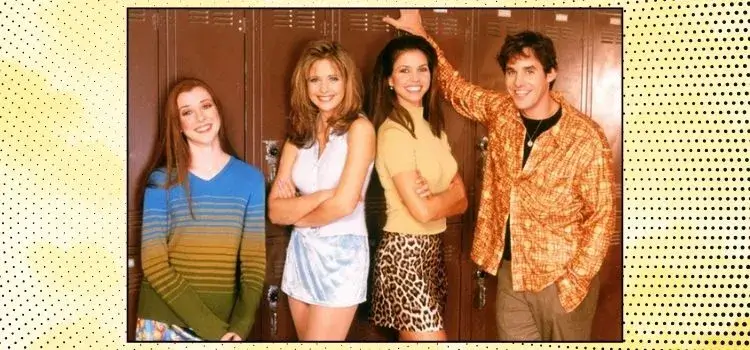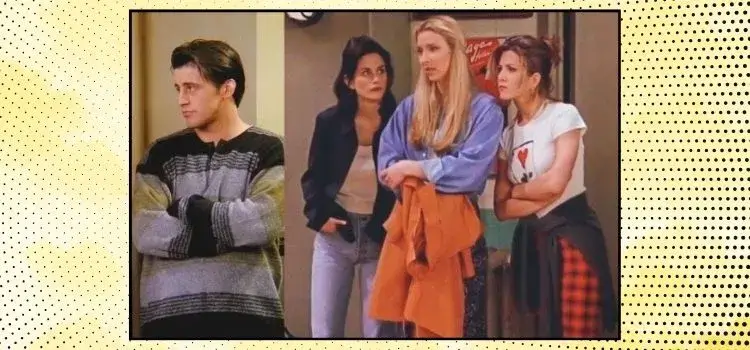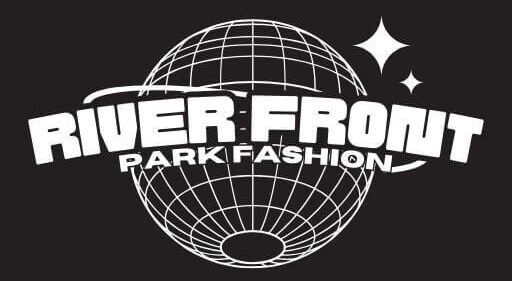As an Amazon Associate, I earn from qualifying purchases
The 1990s, a decade well known for just about anything to do with goofiness and alternative lifestyle; when we dive into our memories of the past decades, it looks as if they happened yesterday! From grunge to minimalism, the 90s stylish trend evolution in Fashion from grunge to minimalism, Inspired by latest trends — Self Development & Motivation By Ganpat Bhaadoria In this post, we will take a look at some of the best clothing trends from the 90s and find out about what clothing was popular in the 90s to help you bring these styles back in your wardrobe today.

Page Contents
ToggleIconic 90s Clothing Trends
1. Grunge Fashion
Emerging in the early 90s, grunge fashion was closely linked to the grunge music scene and groups such as Nirvana and Pearl Jam. The key elements of the style were deliberately unkempt and distressed clothes, which reflected the youth’s angst and anti-establishment moods.
Key elements:
- Flannel Shirts: Worn unbuttoned over band T-shirts, flannels became the style’s hallmark.
- Ripped Jeans: Distressed denim with visible signs of wear and tear, often made in loose-fit designs.
- Combat Boots: Durable and heavy footwear designed for toughness and stemming from the punk subculture themes.
Historical context: Functioning as a counter-movement, grunge fashion was at its core resistance against the 80s trends that were generally glamorous. This fashion style of the youth was particularly authentic, genuine, and honest as a reflection of the disillusionment of the older generation with consumerism.
Modern adaptation: Nowadays, some elements of the grunge style remain popular. Shops or companies that focus on vintage clothes would not miss such key elements of the grunge style as ripped jeans and a flannel shirt, which are still widely available. On a smaller scale, some of today’s designers may also introduce elements reminiscent of those times.
2. Hip-Hop and Streetwear
Towards the end of the 80s and in the 90s, the impact of the emerging culture of hip-hop was most noticeable in the fashion sphere with the appearance of streetwear style. The key elements of the style include oversized clothes, often featuring bold images and elements and conveying a rather laid-back and casual attitude.
Key elements:
- Oversized Shirts and Hoodies: Baggy and comfortable, these items became synonymous with hip-hop fashion.
- Baggy Pants and Tracksuits: Often worn with sneakers, these pieces were integral to the streetwear look.
- Sportswear: Brands such as Nike and Adidas became highly popular due to the appeal of their street and sportswear.
Historical context: Rooted in the early 80s, the style was associated with such hip-hop groundbreaking groups as Run-D.M.C. and reflected the spirit of non-conformism and the culture’s reliance on its emphasis on individualism.
3. Classy Hip-Hop
One of the most significant fashion trends from the 90s is the recognition of the hip-hop style. In the modern world, it is widespread to see high-end designers incorporating it into their collections and to recognize the power of 90’s brands. It can be seen in hoodies, oversized t-shirts, baggy pants, and sneakers.
Key Elements:
- Logo: Reebok, Nike, and Jordan were the most popular brands in the 90s.
- Baggy Clothes: Loose clothes of the XXL size were trendy.
- Bright Colors: Neon colours were the most used ones in the 90s culture.
- Florida Motive: This was incorporated in Versace and Moschino.
Historical Context: Run-DMC influenced the trend and was the first hip-hop act to work with Adidas. Nowadays, Kanye West and Jay Z always value their hip-hop roots.
4. Minimalism
It was the form of protest to the extreme of the ’80s, and all prints being introduced. Minimalism pays attention to simplicity, neat lines, and elegance. For example, wool and cashmere dominated the trend, with Jil Sander and Calvin Klein being the principal helpers since the 1960s.
Key Elements:
- Simple Silhouettes: Clean and pure shapes with few details.
- Neutral Colors: Beige, white, and naked.
- Quality Fabric: Wool, cashmere, and silk.
Historical Context: Jil Sander and Calvin Klein were the primary sources of inspiration for the trend, spreading the word about the simplicity of the elegant type.
5. Bright Colors and Neon
The 90s were all about bright, saturated colors neon shades. This was often connected with the people’s high spirits in the 90s. Examples include bright and unique t-shirts, neon sneakers, and matching accessories.
Key Elements:
- Neon Clothes: Bright, powerful clothes.
- Appearance: Geometric forms, shapes, and abstractions.
- Color block: The clothes of the colors opposing each other.
Historical Context: The trend came after the appearance of pop culture. Music and TV shows were prominent influencers on the trend.
Modern Adaptation: In the modern fashion industry, neon and bright colors have become popular again, especially in streetwear and activewear. In addition, designers frequently use neon accents for their collections.

6. Denim Everything:
In the 1990s, denim was a big fashion style that changed almost every piece of clothing. Denim was especially famous for clothes that looked casual.
Key Elements:
- Denim Jackets: These were usually put on over T-shirts, sweaters, or other clothing items. The jackets could be seen as a casual addition to any outfit.
- Denim Skirts and Overalls: They were famous for their casual, no-stress style.
- High-Waisted Jeans: These jeans highlighted the waistline and were frequently paired with crop tops.
Historical Context: In the ’90s, denim’s overwhelming popularity included the fabric’s durability and the decrease in particular dress norms. Denim was gradually becoming associated with every day and the young people’s desire to rebel.
Modern Adaptation: In the modern world, denim has become a classic part of everyone’s wardrobe. The fashion industry learns from the past and implements various styles of vintage denim found in the 90s. At the same time, contemporary fashion continuously produces new styles and washes of denim.
7. Sportswear and Athleisure
In the 90s, sportswear gradually became everyday clothing in response to the growing fitness culture. The trend blurred the lines between athletic and casual clothes and was called the athleisure movement.
Key Elements:
- Track Suits: They were original because they created a matching set and, at the same time, served both fashion and function aspects.
- Sneakers: They were frequent and are now popular styles produced by industry leaders like Nike and smaller brands like Reebok.
- Athletic Jerseys: They were used as casual wear and often worn with jeans or shorts.
Historical Context: The trend was influenced by the increasing popularity of fitness culture and the corresponding need for comfortable and versatile clothing. Competitive sportswear brands such as Nike and Adidas were also powerful in defining and addressing the trend.
8. Vintage and Retro Revival
Not only were the 90s characterized by a specific style, but it was also a time of nostalgia, in which individuals looked back to the 60s, 70s, and 80s for inspiration. Thus, the 90s were marked by a revival of the clothing and styles of previous decades.
Key Elements:
- Retro Prints and Patterns: Elements of previous decades were reinterpreted for the 90s style.
- Vintage Shops: became a popular way of purchasing one-of-a-kind items.
- Mixing Eras: Many people of the 90s would combine elements of the three previous decades to create a look dissimilar to any specific style.
Historical Context: The trend of reviving past styles corresponded to a more significant cultural trend in the 90s of nostalgia and appreciation for the 60s, 70s, and 80s.
Modern Adaptation: With the resurgence of the vintage style, vintage and retro clothing remains popular, and mixing pieces from different eras is still quite common.
How to Incorporate 90s Clothing Trends Today
Practical Tips:
Mix and Match: Layer 90s clothes with latest trends. For instance, combine a traditional denim jacket with trendy high-waisted jeans.
Accessorize: Hands down the easiest way to sprinkle a little 90s into your daily wardrobe, add pieces like neon belts or grunge-inspired chokers.
At-Home: To get that 90s look, customize your old clothes with patches or fabric paint as a DIY methodology.
Shopping Guide:
Vintage Shops: Find authentic 90s clothing at vintage store or thrift stores.
Online Retailers: You can find a lot of online stores that mainly sell unique vintage and retro fashionable wear.
Contemporary Brands: Many modern brands now stock collections inspired by 90s trends.
Conclusion
Fashion in the 1990s was a hodgepodge of many different styles brewing, at least from late. It reflected an age that had moved on from Reaganite oppression and material greediness to start fresh with cultural fragmentation. Whether you rebelled with the grunge 90s look or exuded relaxed sophistication by sporting top designers’ minimalist aesthetic — we are currently experiencing a massive wave of nostalgia for this iconic decade and its fashion. That is exactly what will allow you to reminisce about the past while still being in trend today with current fashion, and it consists of creating your outfits by mixing these iconic aesthetics.
Tell us about what clothing was popular in the 90s and show off all those great throwback shots in the comments! And remember to follow us for more fashion advice and styling inspiration!
